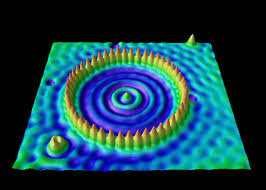Sean Smyrichinsky made this discovery when he was near Banks Island, area close to the location where a US bomber crashed in 1950 after Mark IV bomb was lost on 14 November.
Smyrichinsky said: "I swam to the boat a little further and found an object t . I have never seen : Oh God, I discovered a UFO!" When he documented on the origin of this object came into contact with an image of Mark IV bomb and realized that is very similar to the found object.
 |
| Photo of Mark IV bomb. Source: Wikimedia Commons
In a book published this year, Dirk Septer told the story of the bombs missed. "Near midnight on February 13, 1950, three engines bomber of the US Air Force B-36 Intercontinental caught fire when they were above the coast of northwestern Canada. The team on board was dropped, and the aircraft crashed somewhere in the Pacific Ocean. Four years later, his remains were discovered by accident in a location at a distance from the one that crashed, three hours of flying in the opposite direction of the aircraft, coastal mountains of Colombia. After years was not told anything, the US has admitted finally that they lost one of nukes. "In terms of team members, 5 of them died and 12 survived.
Other articles on the same theme:
Source: Daily Mail
|






